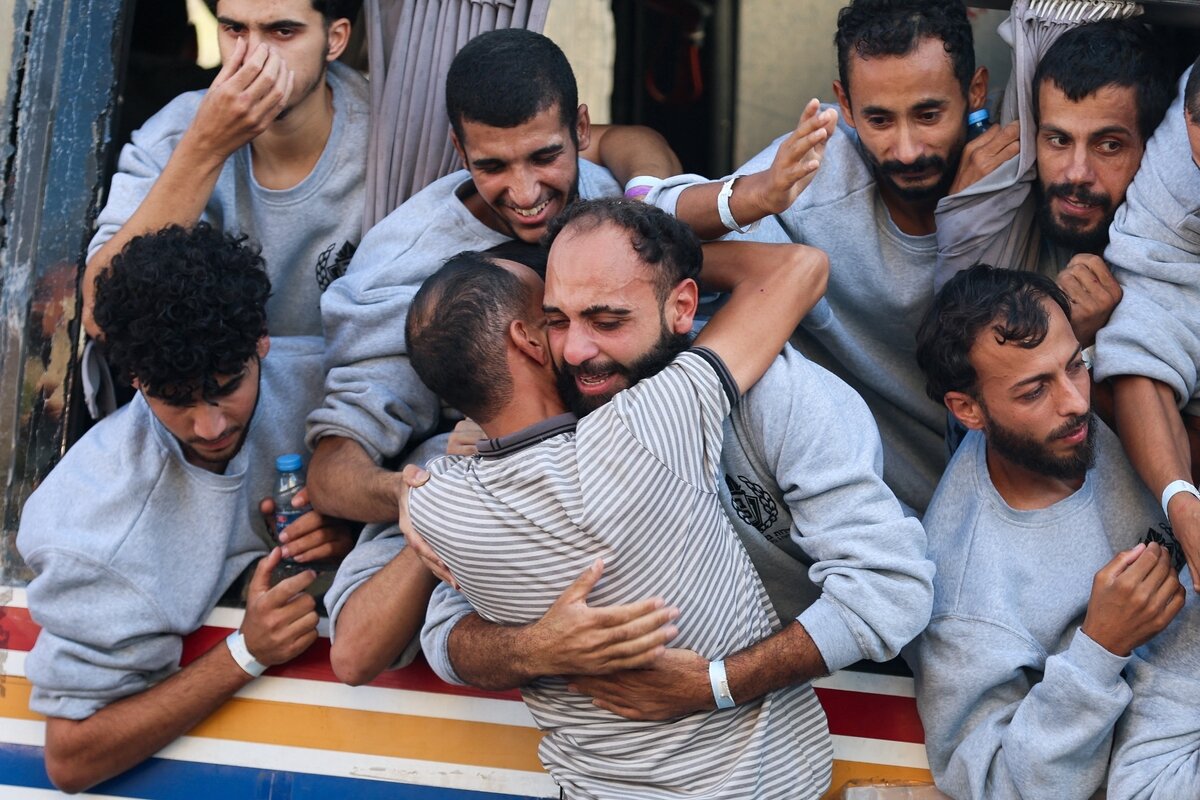'Let him die'

TEHRAN – They emerged from the buses beneath a pale, indifferent sky, their bodies reduced to shadows of the men they once were. Roughly 2,000 Palestinians — released in the first phase of the October captive exchange — returned as specters.
Silence spread like a verdict as families reached and recoiled, medics intercepting embraces to rush dozens straight into emergency rooms.
“My joy went with them,” one freed man whispered after learning his family had been killed while he was jailed.
Their names surface like a ledger of violence. Naseem al-Radee stepped down gaunt and fragile after 100 days in an underground cell, bearing the weight loss and vision damage he attributes to repeated beatings and a final “farewell” kick.
Mohammed al Asaliya, a former university student, gave an account of ‘the disco’—a room of incessant, deafening music that speaks to a regime of sensory torture. He described being forced to kneel and lie face down for hours, threatened with wild dogs, blindfolded, sprayed with chemicals, and blasted with relentless noise until sleep and sense frayed.
Shadi Abu Sido, a photojournalist, fainted at his reunion, saying jailers stripped him, forced him to kneel to eat, and threatened his family after destroying his camera.
Nedal Abu Akr emerged after nearly two decades of near-total isolation as if remembering light for the first time.
Akram al-Basyouni, 45, from northern Gaza, spent nearly two years in custody, including at the Sde Teiman military base. He described a regime of systematic torture and death, recalling how fellow prisoners were beaten until they collapsed. When detainees begged guards for help, the reply was chillingly uniform: “Let him die.”
Dozens more — Samer Abu Dyak, Ayman Zahd, Ahmad Abdel-Al, Hussam Rayyan, Mahmoud Issa, Abd Al-Jawad and Mohammad Shamasneh, Mahmoud Al-Arda and others — arrived with infections, broken bones, amputations, electric-shock marks and the hollow stare of starvation. Gaza hospital staff confirmed that many needed urgent surgeries.
Taken together, these accounts do not amount to random cruelty. They reveal Israel’s systematic architecture of humiliation: prolonged shackling, stress positions, enforced nakedness, sleep deprivation, withheld medicines, filthy food, and routine psychological torment.
Survivors describe beatings so severe that ribs were shattered; one returnee alleged burning liquids were poured over skin.
Several reported being told their children had died. For a devastating handful, the psychological torment inflicted by Israeli prison guards was grimly realized: release brought confirmation that their loved ones had indeed been killed by the Israeli military’s genocidal assault on Gaza.
Rights groups and hospitals say the physical evidence seen at crossings aligns with these testimonies.
There is visual and documentary corroboration. In mid-2024, surveillance footage from the Sde Teiman detention facility circulated widely, showing the sexual assault and severe beating of a Palestinian detainee.
The video triggered outrage and formal probes; several soldiers were arrested and questioned. Yet, as expected, justice was not served: investigations stalled, political leaders defended the accused, and the case dissolved without meaningful accountability.
Human rights organizations, from Israeli monitors to UN offices, have long documented administrative detention without charge, denial of care, and harsh interrogation methods — a record that frames these new testimonies as part of a longer pattern rather than isolated excesses.
The scope is not limited to Palestinians. Dozens of international activists from the Global Sumud flotilla have reported being blindfolded, zip-tied, denied medical care, and subjected to degrading treatment after interception at sea.
Among them is Greta Thunberg, who described five days in Israeli detention marked by beatings while bound, humiliation, and psychological abuse. She recounted guards kicking her whenever an Israeli flag brushed her face, mocking her with obscene slurs such as ‘whore Greta,’ withholding food and clean water, and threatening prisoners with gassing while filming them for propaganda.
The cross-national similarity of methods strengthens the claim that the practices are institutional, not accidental.
Language has not been neutral in this crisis. Western headlines fasten on “hostages” when Israeli soldiers are captured; Palestinians returned from long administrative detention are commonly called “prisoners” or “detainees.”
That choice narrows who is seen as a victim and who is treated as a problem to be managed. The recent exchange freed roughly 2,000 Palestinians, a partial reprieve; credible tallies still place nearly 9,000 Palestinians in Israeli custody, many held without charge.
For those who stepped off buses, survival will be measured in surgeries and the slow labor of reclaiming memories stolen by years behind walls.
For the rest of the world, the obligation is clear: to name what the bodies and voices reveal without euphemism, to pursue independent and transparent investigations, and to heed testimony corroborated by hospitals and human rights documentation.
The returned are no longer silent witnesses; their wounds — visible, named and numerous — demand to be answered.